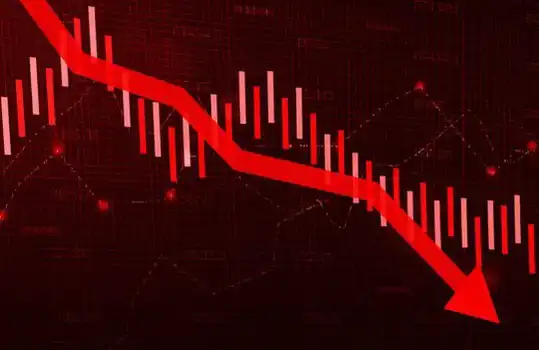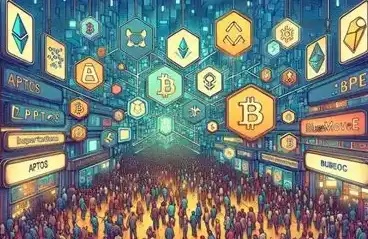How to view Vitalik's viewpoint reversal: "Light" Layer2, "Heavy" Layer1.
All along, Vitalik has been committed to promoting the development of Ethereum L2, and L2 has also expanded rapidly in the past year. According to defillama data, the Ethereum mainnet currently accounts for 60% of the TVL rankings of various chains on the entire network, while L2 Arbitrum, Polygon, and Optimism account for 3.94%, 1.27%, and 1.15% respectively. The top ten TVL rankings already have three seats occupied by Layer2 chains.

This year, highly anticipated events such as the StarkNet airdrop and the Blast mainnet launch have brought unprecedented attention to the Layer2 market. The ZK-EVM rollup ecosystem, consisting of StarkNet, Arbitrum, Optimism, and Scroll, has made significant progress in improving blockchain security and transaction speed. In recent years, Vitalik has been advocating for more complex functionalities to be added to Layer2 while maintaining the purity of the Ethereum chain.
This belief that has been persisted for five years is now shaken.
On February 22nd, Vitalik Buterin, co-founder of Ethereum, replied to a user's tweet saying, "To be honest, my confidence in the idea of 'simplifying L1, even at the cost of building a more complex L2' has decreased by 3 times compared to five years ago. The challenge is that when weighing the risks of L1 bugs and L2 bugs, it is not clear whether the latter is better!" He further explained, "If there is a problem with L1, developers can restore it in just one day; but if there is a problem with L2, it may cause a significant loss of user assets. Therefore, it is worth adding some complex functions to L1 to reduce the code burden of L2 and make L2 relatively simple."

Just as Layer2 development seems to be thriving, why did Vitalik suddenly feel so emotional? Why did he suddenly change his stance after strongly supporting Layer2 development? Is it really because of security issues that triggered such emotions and changes, or is there another reason? In response to this, BlockBeats has compiled some industry KOL/Builder opinions on the development of Ethereum Layer2 as follows:
陈剑 Jason (Independent Researcher)
Just last May, after Vitalik wrote the article "Keep the Chain Minimalist, Don't Overload Ethereum's Consensus," today Vitalik expressed that it is worth adding very complex functions to Ethereum to reduce the burden of Layer2. What prompted Vitalik's change of mind in this year? I think a very important reason is the impact of modularity on the Ethereum system.
Actually, it is precisely because Ethereum wants to be the underlying chain that provides modular development space, to some extent, it can be said that it has cultivated its potential competitors. In last year's article, I also wrote that Ethereum's beautiful endgame is to become an underlying chain that no longer directly interacts with users, only does core value business such as consensus and DA, and leave the complex business of Mass Adoption to Layer2 to handle, just like the relationship between the central bank and local banks, where the central bank only does supervision and regulation, and the local banks handle the deposit and branch opening.
But what if the central bank's control over local banks is weak? What if local banks no longer report and settle with the central bank as usual, or even issue their own local currency?
So to some extent, Ethereum has "split" itself, and this process is also equivalent to a proactive modularization process, which has decoupled its capabilities and provided development opportunities for third-party modularization. According to the hierarchy of public chains from top to bottom, it is divided into execution layer, settlement layer, DA layer, and consensus layer. The first three layers have corresponding Fuel, DYM, and TIA, which have gradually "eroded" Ethereum.
The competitiveness of third-party modular business lies in being fast, good, and cost-effective. Therefore, Ethereum must accelerate its own changes, including the "real" ones such as the Cancun upgrade to reduce Layer2's DA costs, and the "virtual" ones such as the name of orthodoxy. In addition, there is the "ideological guidance" that Vitalik mentioned today, which can make Ethereum more complex and make Layer2 simpler.
Regardless, Ethereum's most core value is its unparalleled security, including the upcoming stateless client upgrade in Osaka, which will once again enhance Ethereum's security. This will be Ethereum's most core competitive advantage, as the consensus layer cannot be modularized. With the Constantinople upgrade reducing Gas fees for Layer2 by more than 10 times, it strengthens the competition of the DA layer. Ethereum is gradually "reclaiming territory" layer by layer.
Qi Zhou (Founder of EthStorage & QuarkChain)
X: @qc_qizhou
Can the so-called ZKEVM alleviate the security risks of L2? If a bug appears in the circuit shared by Layer1 or Layer2 ZKeVM and an attack on L2 is launched as a result, L1 will also be affected, so the L1 repair program (perhaps a RE-ORG) can immediately intervene to fix it.
Mindao (Founder of Dforce)
X: @mindaoyang
Ethereum L2 is redefining L1; Bitcoin L2 is redefining L2. The modularity, parallel EVM, and economic security outputs (re-staking) of L2 are all competing for new public chain opportunities and narratives, upgrading L2 to a new L1. Bitcoin and Ethereum are becoming true Layer0.
26x14-Merlin (7updao Alliance)
X: @26x14eth
V God is up to his tricks again. By doing so, EVM will become more vulnerable, giving Sol and Sui more opportunities.
Welcome to join the official BlockBeats community:
Telegram Subscription Group: https://t.me/theblockbeats
Telegram Discussion Group: https://t.me/BlockBeats_App
Official Twitter Account: https://twitter.com/BlockBeatsAsia


 Forum
Forum Finance
Finance
 Specials
Specials
 On-chain Eco
On-chain Eco
 Entry
Entry
 Podcasts
Podcasts
 Activities
Activities
 OPRR
OPRR








